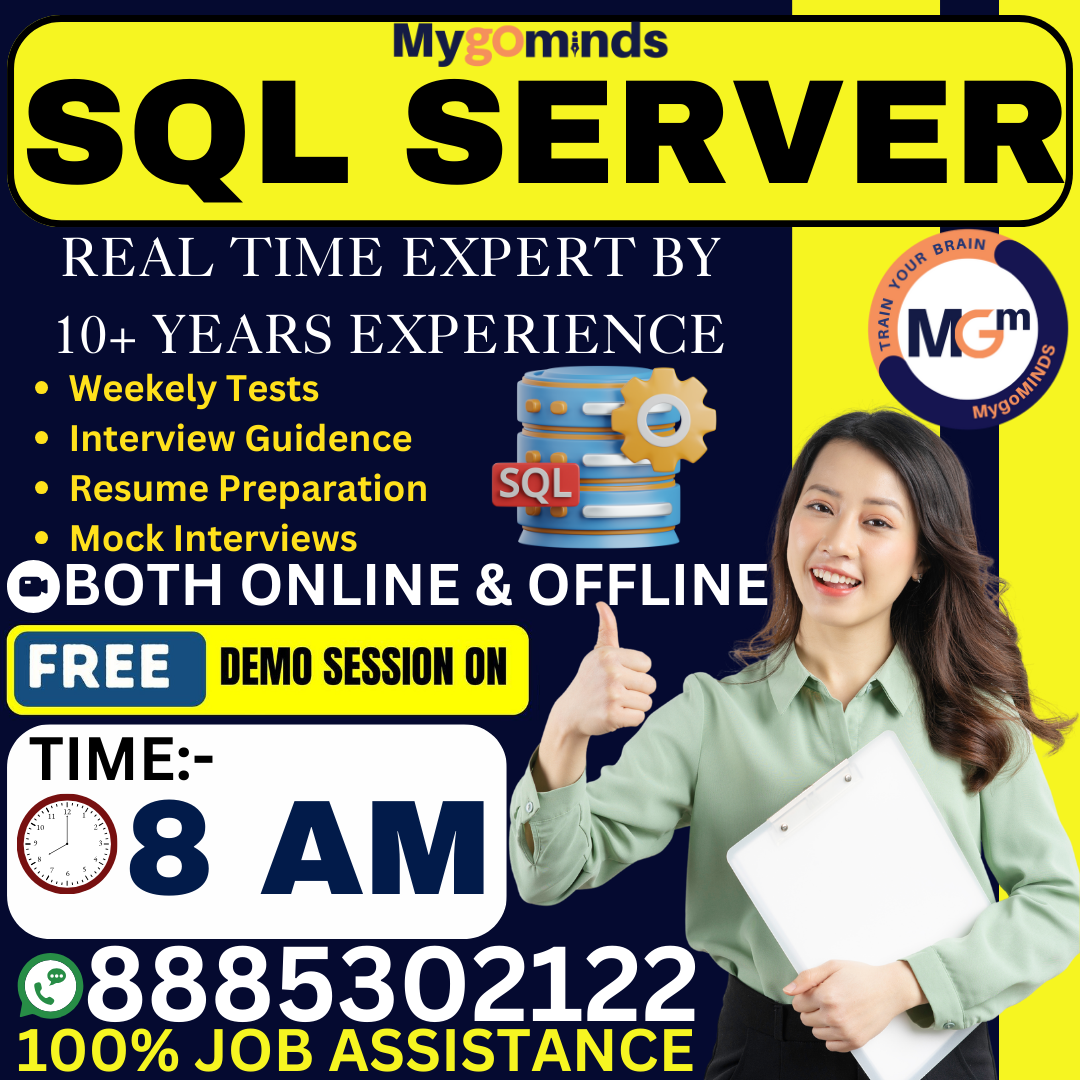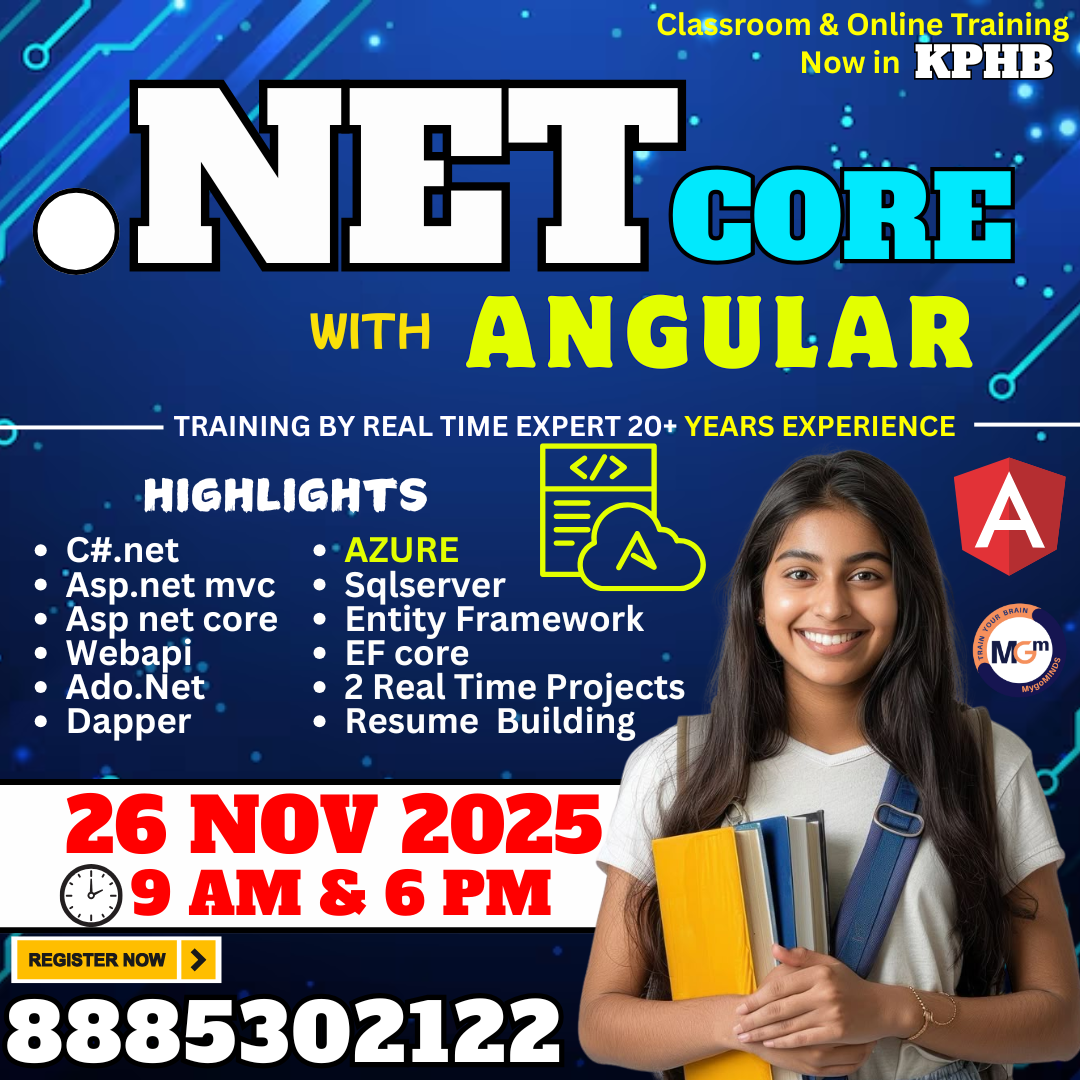-
Call Anytime
+91 8885302122
-
Send Email
mygominds@gmail.com
-
Sai Ram Towers, Above Vijetha
Super Market,JNTU CircleKPHB, Hyderabad.
Course Details

Course Overview
ReactJS is an open-source JavaScript library used to create user interfaces in a declarative and efficient way.
What You Will Learn?
- Module 1: Introduction to React.js
- What is React.js?
- The Virtual DOM
- Setting up a React Development Environment (Node.js, npm/yarn, create-react-app)
- Creating a Simple React Application
- Module 2: JSX and React Components
- Understanding JSX Syntax
- Creating Functional Components
- Creating Class Components
- Props and PropTypes
- State and setState
- Component Lifecycle Methods
- Module 3: Handling Events and Forms
- Event Handling in React
- Form Handling and Controlled Components
- Uncontrolled Components
- Form Validation
- Module 4: Lists and Keys
- Rendering Lists
- Using Keys for Efficient Rendering
- Conditional Rendering
- Fragments
- Module 5: Styling in React
- CSS Modules
- Styled-components
- Inline Styles
- Third-party Styling Libraries (e.g., Material-UI)
- Setting up React Router
- Creating Routes and Navigation
- Route Parameters and Query Strings
- Nested Routes
- Route Guards for Authentication
- Module 7: State Management with Redux
- Introduction to Redux
- Actions, Reducers, and Store
- Connecting React Components to Redux
- Redux Middleware (Thunks)
- Best Practices and Redux Toolkit
- Module 8: Asynchronous Programming
- Fetching Data with Axios
- Using Promises and Async/Await
- Handling API Calls with Redux
- Real-time Data with Web Sockets
- Module 9: Advanced React Patterns
- Higher-Order Components (HOCs)
- Render Props
- Compound Components
- Context API
- Error Boundaries
- Module 10: Testing in React
- Unit Testing with Jest and React Testing Library
- Testing Redux and Async Code
- End-to-End Testing with Cypress
- Test-Driven Development (TDD) Practices
- Module 11: Server-Side Rendering (SSR)
- Benefits of SSR
- Setting up SSR with Next.js
- Data Fetching in SSR
- SEO and Performance Considerations
- Module 12: Deployment and Optimization
- Preparing for Production
- Deploying React Apps to Various Platforms (e.g., AWS, Heroku)
- Performance Optimization Techniques
- Code Splitting and Lazy Loading
- Module 13: Authentication and Authorization
- User Authentication with Firebase
- Role-Based Access Control (RBAC)
- OAuth and Social Logins (e.g., Google, Facebook)
- Module 14: Building Real-World Projects
- Applying React and Redux Concepts to Real Projects
- Project Planning and Architecture
- Integrating APIs and Backend Services
- Deployment, Hosting, and Continuous Integration (CI/CD)
- Final Project:
- Students will work on a substantial final project where they apply their knowledge and skills to develop a complete web application.
Register for Course




